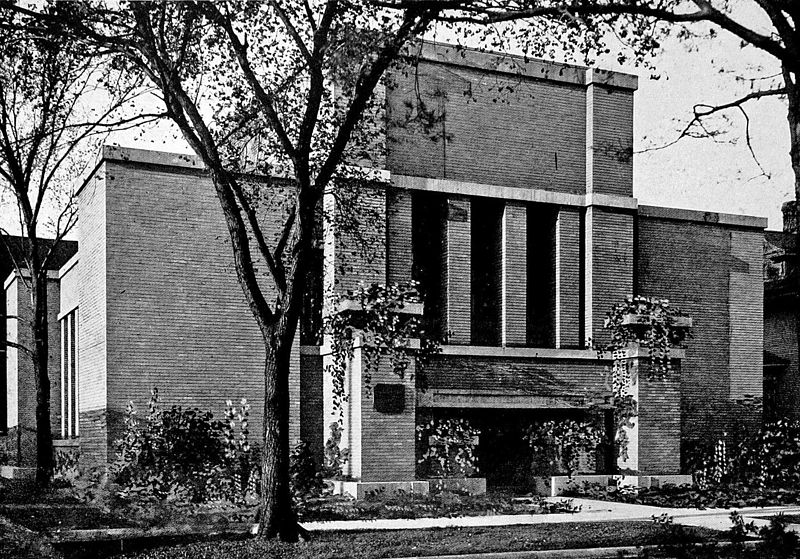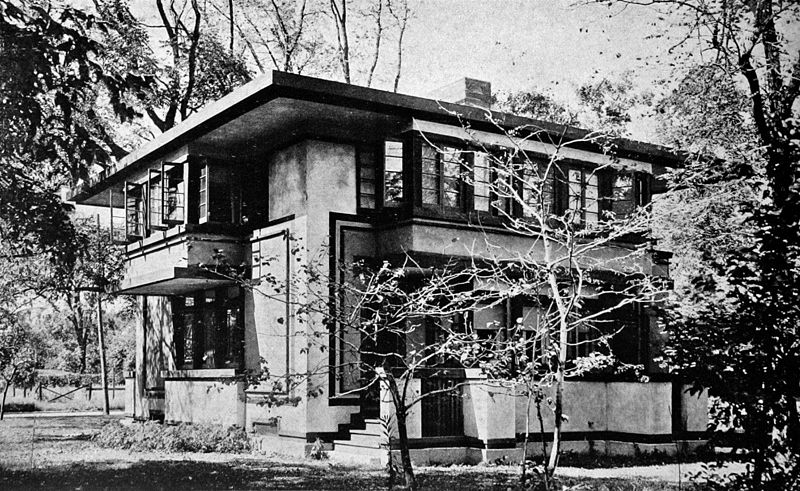<Back to Index>
- Architect Francis Barry Byrne, 1883
- Architect William Eugene Drummond, 1876
PAGE SPONSOR
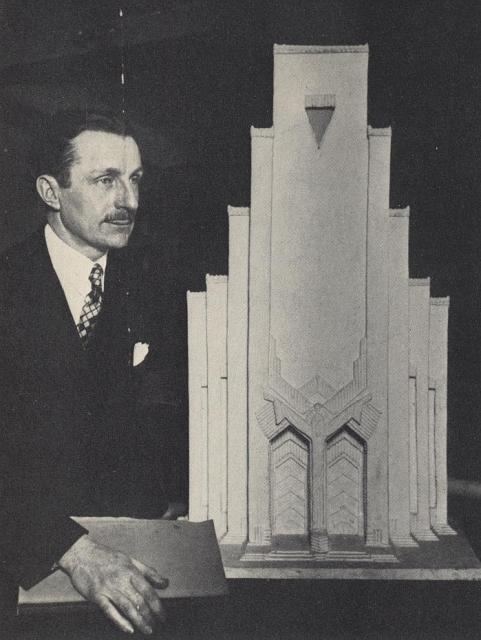
Francis Barry Byrne (19 December 1883 – 18 December 1967) was initially a member of the group of architects known as the Prairie School. After the demise of the Prairie School about 1914 - 16, Byrne continued as a successful architect by developing his own personal style.
Francis Barry Byrne was born and raised in Chicago. After seeing a Chicago Architectural Club exhibit in 1902, he sought employment with Frank Lloyd Wright and secured an apprentice position although he was untrained in architecture. As Wright’s son, John, relates:
“William Drummond, Francis Barry Byrne, Walter Burley Griffin, Albert McArthur (Albert Chase McArthur), Marion Mahony, Isabel Roberts and George Willis were the draftsmen. Five men, two women. They wore flowing ties, and smocks suitable to the realm. The men wore their hair like Papa, all except Albert, he didn’t have enough hair. They worshiped Papa! Papa liked them! I know that each one of them was then making valuable contributions to the pioneering of the modern American architecture for which my father gets the full glory, headaches and recognition today!"
After working for Wright in his Oak Park, Illinois studio between 1902 and 1907, Byrne worked briefly at other Chicago firms. He moved to Seattle in winter 1908 - 9 to join Andrew Willatzen who had been a fellow employee at Wright's office. They formed the firm Willatzen & Byrne and, over the next several years, produced a series of residential designs in the Prairie School style.
After the Willatzen & Byrne partnership dissolved in 1913, Willatzen remained in Seattle but Byrne moved to southern California where he lived briefly with Wright's sons Lloyd Wright and John Lloyd Wright. In 1914, he returned to Chicago at first to manage, then, take over the practice of Walter Burley Griffin who had moved to Australia to develop plans for its new capital city, Canberra.
By 1917, Byrne was practicing under his own name. He briefly served in World War I, then returned to Chicago. Byrne's style developed independently of Wright and the Prairie School as he moved toward greater simplification of form. Annette Cremin became Byrne's wife in 1926, and they had three children: Ann, Cathleen and Barry. As an artist, Annette influenced his work, drawing renderings of his architectural designs, and on occasion, contributing interior color patterns and decoration for his buildings and churches. During the depression when there was no demand for his services, she supported the family.
During the 1920s, some of Byrne's work contained elements of Expressionism. He became successful as a designer of ecclesiastical and educational buildings for the Roman Catholic Church, for whom he later created three of his most important works: Church of Christ the King in Turners Cross, Cork, Ireland (1931), Church of St. Francis Xavier in Kansas City, Missouri (1949), and St. Benedict's Abbey in Atchison, Kansas (1951 - 1957).
In the 1930s, Byrne moved to New York, but after 1945 returned to Chicago. Byrne partially retired about 1953, but continued to accept commissions until his death. He died in December 1967 after being struck by an automobile driven by William Harridge, the former president of Major League Baseball's American League. He is buried in Calvary Cemetery, Evanston, Illinois.
Archival materials are held by the Ryerson & Burnham Libraries in the Art Institute of Chicago.
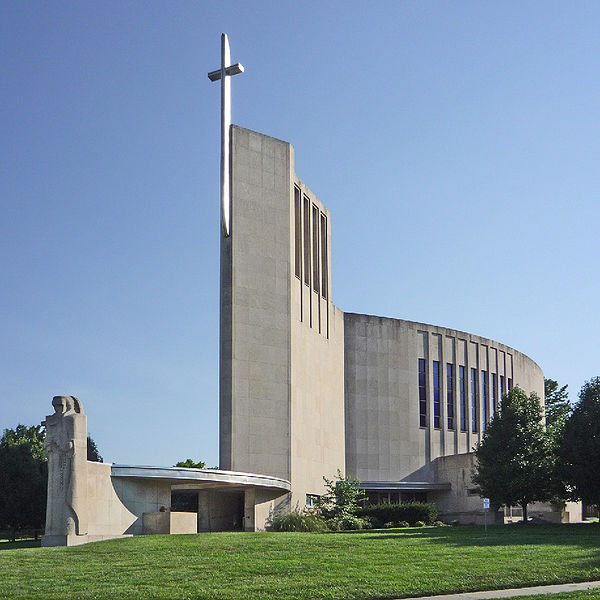
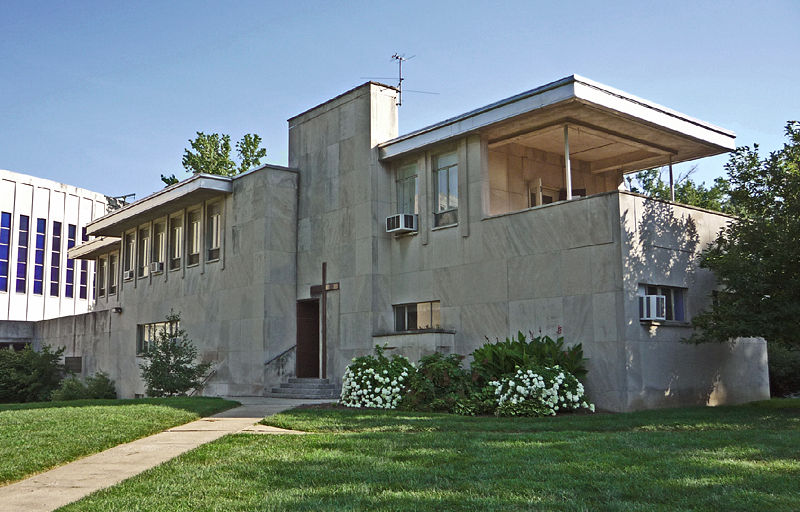
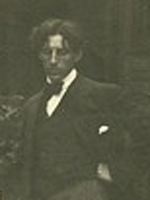
William Eugene Drummond (March 28, 1876 – September 13, 1948) was a Chicago Prairie School architect.
He was born in Newark, New Jersey, the son of carpenter and cabinet maker Eugene Drummond and his wife Ida Marietta Lozier. The motto of the Drummond family was and is “Best ye can - aye - and be kind.” The family relocated from Newark to Chicago in 1886; William was ten. The Drummonds settled on the west side of Chicago, in Austin, at 813 Central Avenue. William Drummond grew up in the village of Austin and attended the Austin public schools. The Drummond family house is standing as of 2008 and bears some resemblance to the Prairie style remolding it underwent at the hands of William and Eugene. William learned much in the remodeling of the family house. He and his father built the present house around and over the old house, with the family still living in it. The family owned the house until 1966. William was fifteen years older than his brother Frank; there were five girls between them. All seven Drummond children grew up in the village of Austin.
William Drummond was admitted to the University of Illinois School of Architecture in 1899, at the same time that fellow Prairie School architect Walter Burley Griffin was attending there. However, financial difficulties forced Drummond to leave after one year.
Thereafter, Drummond began working in Chicago in the firm of architect Louis Sullivan. Several months later, he went to work for Frank Lloyd Wright. Drummond would serve as the chief draftsman for several well known Wright’s commissions including the home of Edwin and Mamah Borthwick Cheney in Oak Park, the Frederick Robie House in Chicago, the Susan Lawrence Dana House in Springfield, IL, and the Larkin Company Administration Building in Buffalo. Drummond obtained his architect’s license in 1901. In the years 1901 - 1905 he worked for Wright part time while also working full time for Richard E. Schmidt (1901 - 1902) and Daniel H. Burnham (1903 - 1905). Drummond returned to full time employment with Wright from 1905 to 1909, when disagreement about pay caused him to leave Wright’s studio. But Drummond was a key figure in Wright’s studio during its most productive Prairie years. As Wright’s son, John, relates:
“William Drummond, Francis Barry Byrne, Walter Burley Griffin, Albert McArthur (Albert Chase McArthur), Marion Mahony, Isabel Roberts and George Willis were the draftsmen. Five men, two women. They wore flowing ties, and smocks suitable to the realm. The men wore their hair like Papa, all except Albert, he didn’t have enough hair. They worshiped Papa! Papa liked them! I know that each one of them was then making valuable contributions to the pioneering of the modern American architecture for which my father gets the full glory, headaches and recognition today! ”
In
1907 Drummond married Clara Alice McCulloch Christian (1874 - 1938), a
woman several years his senior whose first husband died of tuberculosis.
Their union produced three sons: Robert, William and Alan. In 1910,
Mary Roberts, Isabel Roberts’ mother, sold the property next to their
celebrated River Forest, IL, Isabel Roberts House, to their friend and associate William Drummond, who built his own Prairie style home there.
Upon parting ways with Wright, Drummond went into private practice, even though he had already undertaken his first commission in 1908, the First Congregational Church of Austin. In 1912 he went into partnership with Louis Guenzel (1860 – 1956), who had been a draftsman for Dankmar Adler and Louis Sullivan. Isabel Roberts worked for Guenzel and Drummond for about a year. The partnership dissolved just after the start of World War I, in 1915.
Drummond continued his independent practice thereafter, designing churches, residences and small commercial buildings in the Prairie style, his work in the pure Prairie idiom culminating in the delightfully elegant Brookfield Kindergarten (also known as the Hilly House) of 1920 in Brookfield, Illinois.
Drummond was among those who submitted designs in the famous 1922 competition for the Chicago Tribune Building. His entry is daringly original, with a huge tri - parti rectangular crown, perforated and carved in such a way that it defies conventional architectural descriptive terms. With oversize urn forms at the base of the crown, scooped recesses and geometric ornament at its summit, the building offered a dynamic melding of Prairie and Art Moderne that, had it been chosen, would have become an immediate and vibrant landmark on the Chicago skyline, without harking back to any historic style (as did the winning entry by architects John Mead Howells and Raymond Hood). Drummond's design still looks innovative ninety years later and compares favorably to early 21st century skyscraper design.
The prevailing view of his later career is that, as the public taste changed during the 1920s, Drummond’s work bore less of the hallmarks of the Prairie School. Instead, his work was sometimes characterized by English cottage and Tudor elements, many in River Forest, typified by the Edward W. Scott Residence (1928) with its massive chimney, steeply pitched gables and paired multi - story bay window towers, and by the River Forest Public Library (1928 – 1930).
William
Drummond took part in the planning commission of River Forest
throughout the 1920s and 1930s, while also remodeling several of
Wright's designs. Shortly before his death on September 13, 1946,
Drummond published a book detailing a plan to redesign the United States
Capitol. Drummond's final resting place is Forest Home Cemetery, Forest
Park, Cook County, Illinois.
